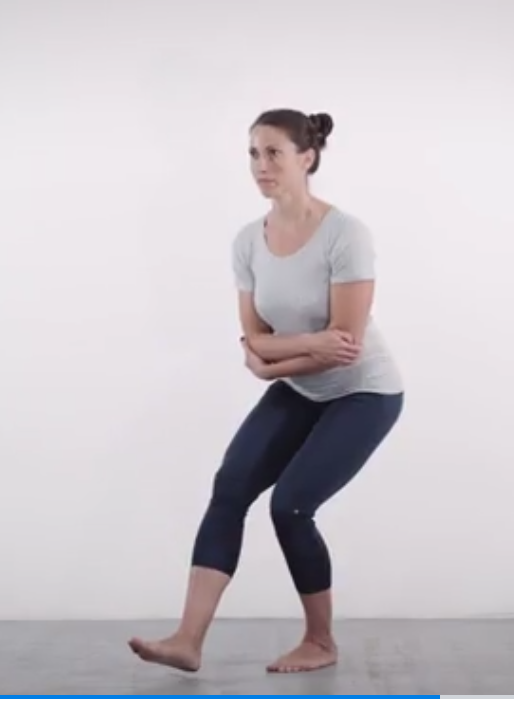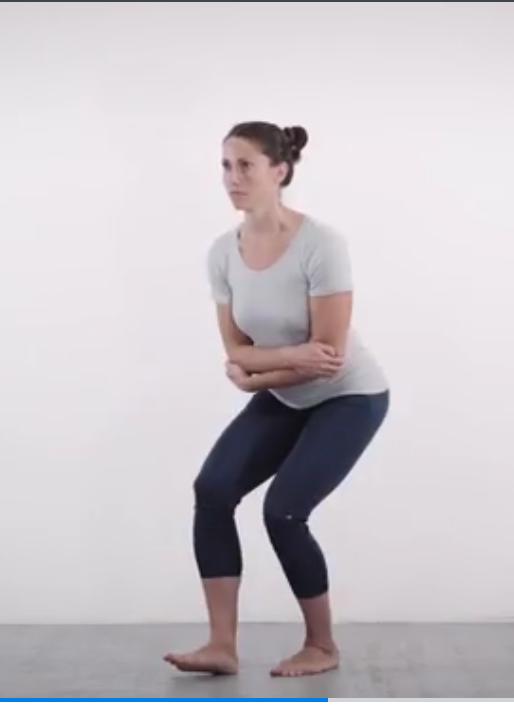Single leg squat
Normal mode
Easy Mode
Task
Shift the body weight to the standing leg and lift the other ‘free’ leg directly in front towards the sensor, as if about to take a small step forwards. Then the test person performs a ¼ squat by bending the knee of the standing leg forward over the toes. Measurements start at the beginning of the knee flexion and ends at the top of the squat when the knee is extended again.
If strength, stability or discomfort compromise performance during the pre-scan rehearsal, of after three attempts at Normal mode, then the task will be made lighter by switching to Easy mode.
Easy Mode
The test person is asked to perform the exercise with the heel of the free leg on the ground directly in front of the same hip, and at the level of the toes of the standing leg. The majority of the body weight should remain on the standing leg. This is considered partial weight bearing and less of a challenge to balance due to a wider base of support.
Desired technique
Arms folded across the belly.
Feet 15 cm apart.
Feet pointing forwards.
Lift the free leg immediately in front of the body, as shown in the instructional video. Avoid crossing the lifted leg over the standing leg. Avoid lifting the free leg too high, out to the side or behind the standing leg. This will trigger a ‘repeat test’ response.
Perform a ¼ squat, with the thighs stopping at approximately 45° with horizontal, or 60° of knee flexion. This is enough for most Activities of Daily Living (ADL), and often used in research about function.
Sit down, and lean slightly forward with the trunk. Avoid bending forward excessively with the trunk. Bending beyond approximately 65° will trigger a request for a repeat test.
Always squat to a comfortable depth. If the knees do not bend enough, this may trigger a request for a repeat test with a deeper squat.
When finishing the squat movement the knees need to be fully extended.



